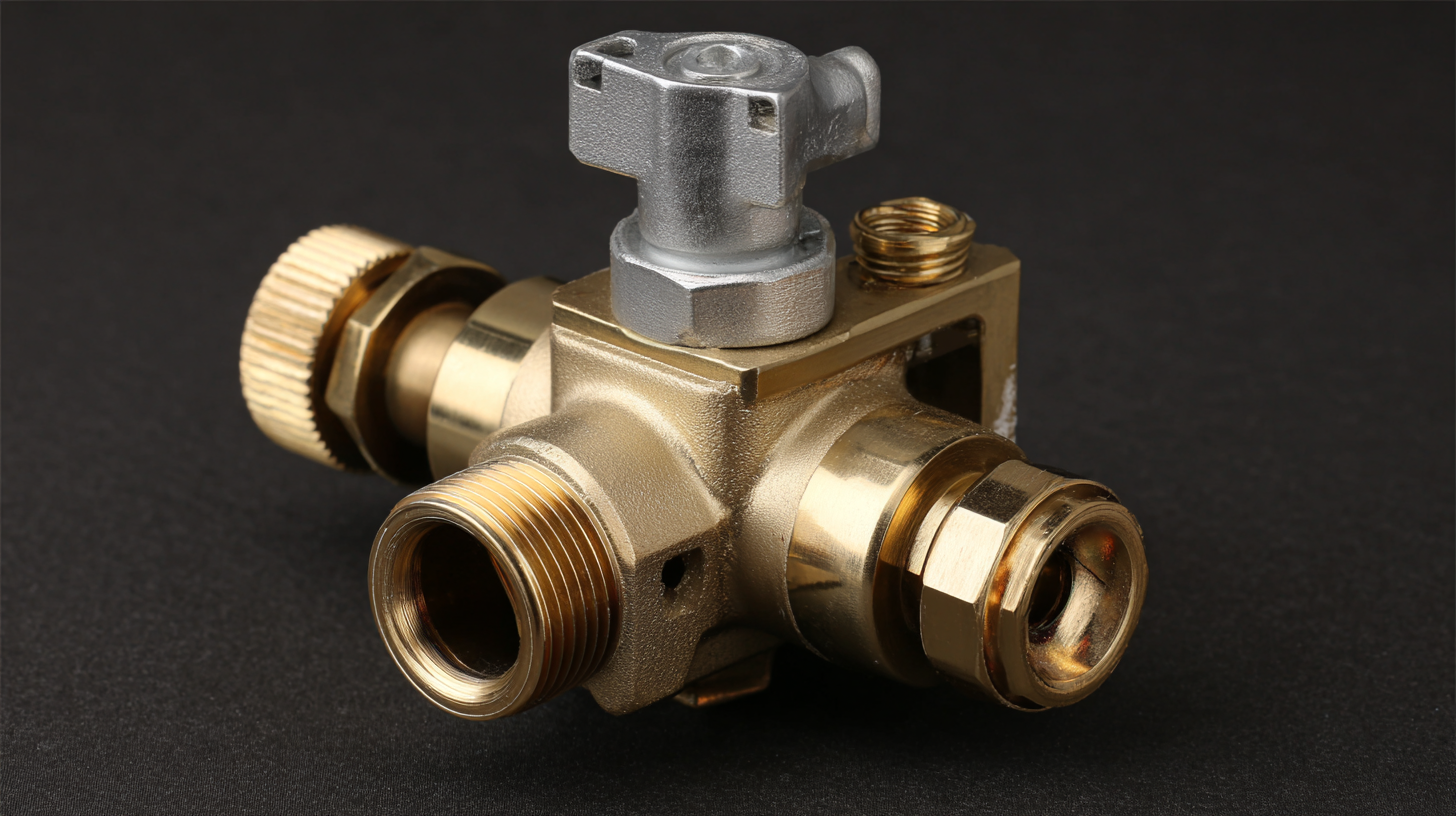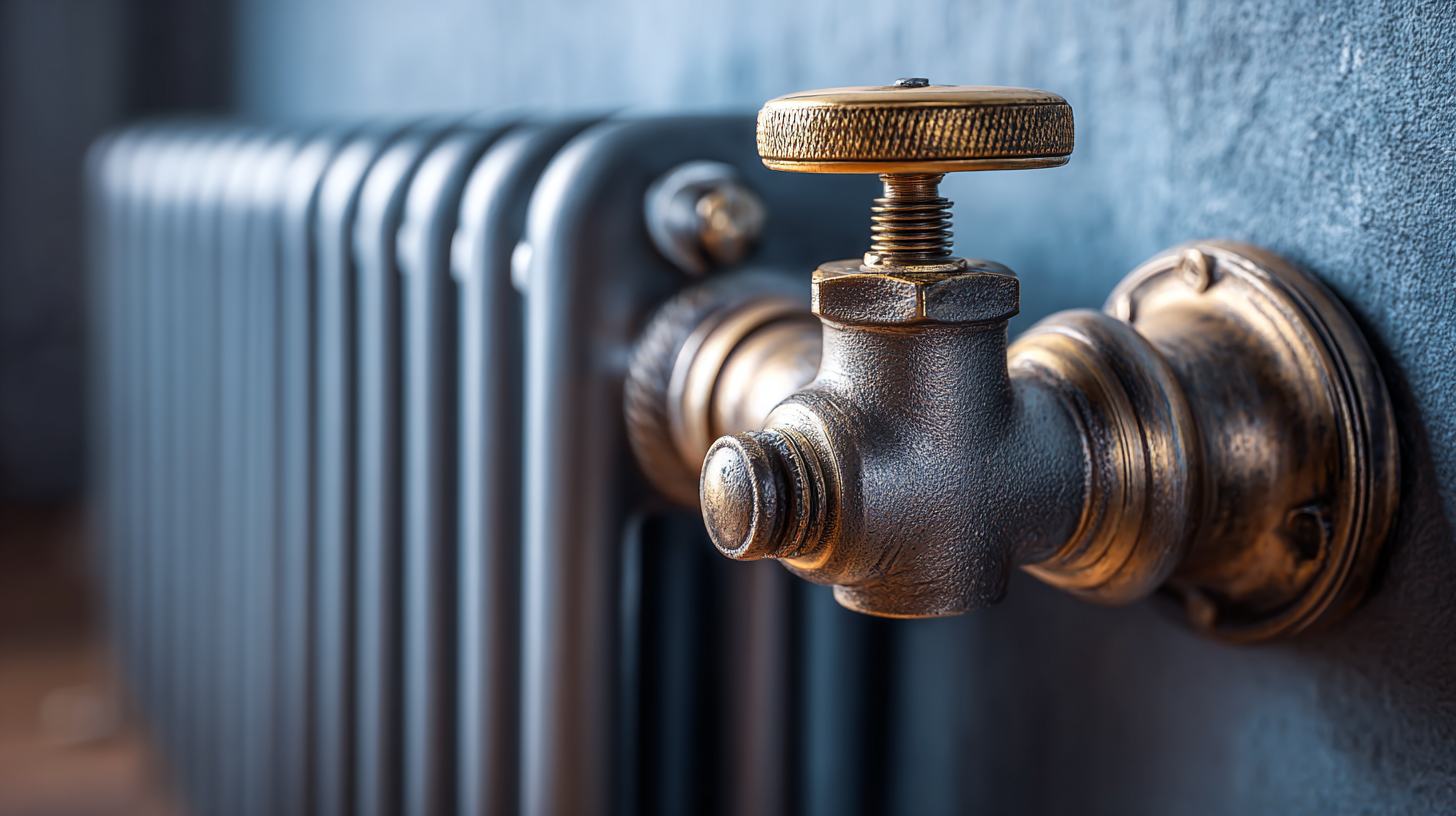As the HVAC industry continues to evolve, the importance of efficient heating solutions is more pronounced than ever. One pivotal component in ensuring optimal performance and energy efficiency in heating systems is the Radiator Control Valve. In an increasingly competitive global market, brands are not only focusing on innovation but also on maintaining high-quality standards to cater to diverse consumer needs. This blog delves into the 2025 trends surrounding HVAC, particularly focusing on a comparative analysis of the best Radiator Control Valves available on the market. By exploring advancements in technology, design, and functionality, we aim to uncover how these valves can enhance heating efficiency and ultimately contribute to a more sustainable future. Join us as we investigate how leading manufacturers from China are setting the stage to compete on a global scale, emphasizing the principle that quality truly wins in the international marketplace.

When considering radiator control valves, understanding their key features is essential for making informed decisions that enhance energy efficiency and comfort in your home. One of the primary aspects to evaluate is the valve's compatibility with smart home systems, which allows for seamless integration with modern smart thermostats. This integration can optimize heating schedules and personalize settings based on your lifestyle patterns, resulting in enhanced thermal comfort while reducing energy consumption.
Another critical feature to look for is the precision of the valve controls. The best radiator control valves offer advanced modulation capabilities that allow for fine-tuning of heat output in different rooms. This level of control ensures that each space in your home can be maintained at the desired temperature without overworking your HVAC system. Moreover, features like automated adjustments based on real-time temperature readings can significantly contribute to overall efficiency, thereby saving energy and cutting costs. As the hydronic radiators market continues to grow, the emphasis on such smart functionalities in radiator control valves will undoubtedly shape the future of home heating solutions.
| Feature | Value A | Value B | Value C |
|---|---|---|---|
| Material | Brass | Stainless Steel | Composite Plastic |
| Temperature Range | -10°C to 90°C | -15°C to 95°C | 0°C to 85°C |
| Pressure Rating | 16 bar | 20 bar | 10 bar |
| Control Type | Electronic | Thermostatic | Manual |
| Installation Type | In-line | Angled | Straight |
| Smart Home Compatibility | Yes | Yes | No |
In the dynamic world of HVAC systems, the design of radiator control valves plays a pivotal role in enhancing energy efficiency and optimizing thermal comfort. According to the 2023 HVAC Efficiency Report by the American Society of Heating, Refrigerating and Air-Conditioning Engineers (ASHRAE), well-designed valves can improve system efficiency by up to 25%. This is particularly significant as energy costs continue to rise, prompting both residential and commercial sectors to invest in more effective solutions. The integration of advanced materials and technology in valve design ensures precise flow regulation, reducing energy waste and maintaining consistent temperature levels across spaces.
Tip: When selecting radiator control valves, consider those equipped with electronic actuators, as studies indicate they can facilitate real-time adjustments based on room occupancy and temperature demands, further enhancing energy savings.
Additionally, the aesthetics and ergonomics of control valves should not be overlooked. A seamless integration into existing systems not only improves functionality but also complements the overall design of HVAC systems. The 2024 Global HVAC Market Trends report highlights that consumers increasingly prefer sleek, user-friendly valve designs that enhance usability while maximizing performance.
Tip: Regular maintenance and timely upgrades of valve systems can extend their life span and ensure sustained efficiency, making it a wise investment for both short-term comfort and long-term savings.
When identifying reliable manufacturers of radiator control valves, quality assurance plays a crucial role. A reputable supplier not only guarantees the reliability of their products but also invests in advanced technologies to enhance their manufacturing processes. One such innovation is the use of automated inspection methods, which increase the accuracy and efficiency of quality control. By implementing deep learning techniques, manufacturers can detect faults like gasket misalignments, ensuring that each valve meets stringent performance standards before it reaches the market.

Moreover, a quality radiator valve supplier prioritizes transparency and customer support. They offer comprehensive product specifications and are willing to engage in open discussions about their manufacturing processes. This transparency builds trust with customers and creates a collaborative environment for feedback and improvement. Additionally, a commitment to sustainable practices and sourcing can indicate a manufacturer's dedication to quality and responsibility. As HVAC trends evolve, focusing on these aspects will help buyers make informed decisions when choosing their radiator control valve suppliers.
When selecting HVAC components, particularly radiator control valves, the question of cost versus quality becomes pivotal. As new trends emerge in sustainable building practices, the demand for reliable, efficient components rises. Investing in high-quality radiator control valves not only enhances the performance of HVAC systems but also aligns with the growing trend of sustainability in building materials. These valves can significantly improve energy efficiency, ultimately cutting down on costs over time.
Tip: Prioritize purchasing valves from manufacturers that showcase a commitment to innovation and sustainability. Look for products that integrate advanced technology, which can optimize your HVAC system's performance while reducing environmental impact.
Finding the right balance in your HVAC component selection may require some research. Cost-effective options might seem appealing initially, but they can lead to higher long-term costs if they fail to perform or require frequent replacements. Quality valves could have a higher upfront cost, but their durability and efficiency can save you money on energy bills and maintenance in the long run.
Tip: Evaluate your HVAC needs carefully and consider both short-term expenses and long-term savings. Investing in quality might seem steep at first, but over the lifespan of your HVAC system, it often proves to be more economical and environmentally friendly.
As we move towards 2025, the HVAC industry is experiencing transformative innovations that are reshaping radiator control valve technology. One of the most significant trends is the integration of smart technology. According to a report by the International Energy Agency, smart valves can enhance energy efficiency by as much as 30%. These valves utilize advanced sensors and algorithms to optimize flow rates based on real-time data, significantly improving comfort levels while reducing energy consumption.

Additionally, the push for sustainability is driving manufacturers to develop eco-friendly materials for radiator control valves. A recent analysis by MarketsandMarkets predicts that the demand for sustainable HVAC solutions will grow by 20% over the next few years. This trend is complemented by the increasing focus on retrofitting existing systems with modern, energy-efficient valves. By adopting such innovations, building owners can not only meet regulatory requirements but also achieve substantial cost savings in their operations.
Finally, enhanced interoperability facilitated by smart building technologies is set to become a standard feature. With advancements in IoT, newer radiator control valves will be able to communicate seamlessly with other building systems, leading to more centralized and efficient operations. This interconnectedness is projected to improve overall HVAC system performance by 25%, according to a report from the Global HVAC Summit.
